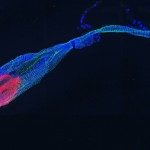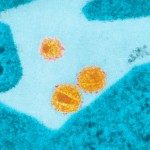Link to Pubmed [PMID] – 27803285
Sci Signal 2016 Nov;9(452):ra107
Chemokines stimulate signals in cells by binding to G protein (heterotrimeric guanine nucleotide-binding protein)-coupled receptors. These chemoattractant cytokines also interact with heparan sulfate (HS), which provides positional information within tissues in the form of haptotactic gradients along which cells can migrate directionally. To investigate the mechanism by which HS modulates chemokine functions, we used the CXC chemokine CXCL12, which exists in different isoforms that all signal through CXCR4 but have distinct HS-binding domains. In experiments with both cell-associated and solubilized CXCR4, we found that although CXCL12γ bound to CXCR4 with a higher affinity than did CXCL12α, CXCL12γ displayed reduced signaling and chemotactic activities. These properties were caused by the specific carboxyl-terminal region of CXCL12γ, which, by interacting with CXCR4 sulfotyrosines, mediated high-affinity, but nonproductive, binding to CXCR4. HS prevented CXCL12γ from interacting with the CXCR4 sulfotyrosines, thereby functionally presenting the chemokine to its receptor such that its activity was similar to that of CXCL12α. HS had no effects on the binding of CXCL12α to CXCR4 or its biological activity, suggesting that this polysaccharide controls CXCL12 in an isoform-specific manner. These data suggest that the HS-dependent regulation of chemokine functions extends beyond the simple process of immobilization and directly modulates receptor ligation and activation.


